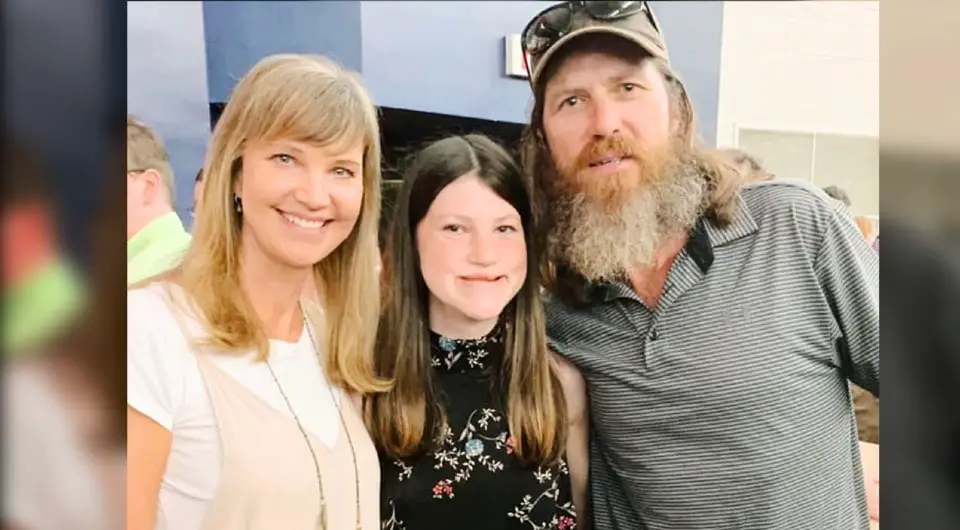
While many people typically wait until they are at least 30 years old to build their dream home, the thrill of hand-crafting your ideal living space is unmatched.
Imagine the journey of creating a plan, putting your heart and soul into it, and finally seeing your vision come to life. That’s exactly what Tom did. At just 17 years old, he used his skill, creativity, and determination to make his dream a reality.

Driven by rising housing costs and a desire for independence, Tom set out to build a modest home using recycled materials. He discovered he could create something completely from scratch while staying within a budget.
“My vision for the cabin was to keep things simple and provide a stress-free lifestyle. Everything I have is mine; I paid for everything”, Tom explained.

Now, at 20, Tom is relieved knowing he won’t have to spend his hard-earned money on rent. “It’s a no-brainer life and once you’ve built something, it really is yours”, he added.
Tom’s house is located on his grandfather’s extensive property and retains a charming English country aesthetic, complete with a side window. At 17, he bought a caravan and immediately began building it while working and completing his carpentry apprenticeship, which he completed in December.

The front of his house is made of larch wood, sourced cheaply from a local sawmill, while the side walls are made of fence boards. All the windows are recycled, sourced from a website that specializes in used materials. He recently added a porch, using boards from a scaffolding company and other scrap and reclaimed wood he recovered from the job.

Upon entering Tom’s home, visitors are greeted by beautiful reclaimed wood and a tranquil poster of a seascape. “My goal was to use only reclaimed wood for the build because it’s budget-friendly,” Tom noted. Much of the wood in his home was salvaged from old homes that he personally stripped down, sanded and repurposed.

The living area includes a compact workspace for his work and meals, a standard sofa, and a wall-mounted TV. In the future, he hopes to upgrade to a multifunctional sofa with built-in storage.
Tom especially loves his kitchen, where he made a fully functional worktop out of recycled scaffolding boards and spent hours sanding and painting it. The kitchen is equipped with essential appliances such as a fridge, stove and toaster.

Opposite the kitchen is a compact bathroom with a small chemical toilet with electric flush. The shower area has corrugated iron walls and copper fittings, evoking a rustic farmhouse feel. Back in the living room, a ladder leads to the loft, which leads to Tom’s cozy bedroom with double mattress.
Tom began building his dream home at age 17 with a budget of $8,200 and an hourly wage of $5.50 and managed to save most of his income to finance the construction of his home using recycled materials.

Imagine how his home will evolve as he completes the various upgrades he has in mind! For a full tour of Tom’s home, check out the video below
Jase and Missy Robertson’s journey: Overcoming obstacles and finding strength
Mia Robertson, the youngest daughter of Duck Dynasty’s Jase & Missy Robertson, has been born with a condition known as cleft lip and palate, a gap in the upper lip that can involve the gum as well.
The U.S. Centers for Disease Control and Prevention shares that about one in every 1,600 babies is born with a cleft lip with a cleft palate in the U.S.
Because of her condition, sweet Mia, who is now 18 years old, has been forced to undergo 13 surgeries, with the 14th taking place just recently. The family truly hopes this would be Mia’s last procedure before her problem is finally solved.

Throughout every surgery, the young girl remains positive. What’s most, she hopes she serves as inspiration for other young children who are born with the same condition. On her own initiative and with the help of her family, Mia established the Mia Moo Fund in order to assist in making certain that each and every child wears a smile on their face.
“One of the functions of the Mia Moo Fund is to spread awareness of the cleft lip and palate journey,” Missy Robertson told Christian Post. “The other one is to help with medical funds for the parents and the families living right here in America.”
On his podcast Unashamed, Jase Robertson shared an update on Mia’s condition and said that his daughter is recovering well.
“She’s doing great. She’s turned a corner,” he said, and then added, “Everything seems great, seems to be fine.”
“Surgery went a little longer than expected, but she is home and recovering,” the loving father told his podcast listeners. “Thank you for praying for her and for our family. She is a champion!”

Before the surgery took place, Missy spoke of her daughter’s condition and explained that she had been constantly asked about the number of procedures Mia would need to undergo in the future. “There is never any other response than ‘We just don’t know,’” Missy said. She then added that they rely on God for assistance. “Since she is 18 now, she is taking the lead in all the discussions and medical forms. It’s been a little strange,” Missy wrote. “But it’s just another reminder to lean on the Lord and that I’m not in control.”
Mia also hopes that she’s at “the finish line.”
“Hopefully the last time I’ll see my doctors in this setting! It’s been a long road but we are at the finish line,” brave Mia said.

The Robertson’s have also been preparing for a new addition to the family as they open the doors to their hearts and home for a child whose mother was unfit to take care of.
We wish Mia speedy recovery.



Leave a Reply